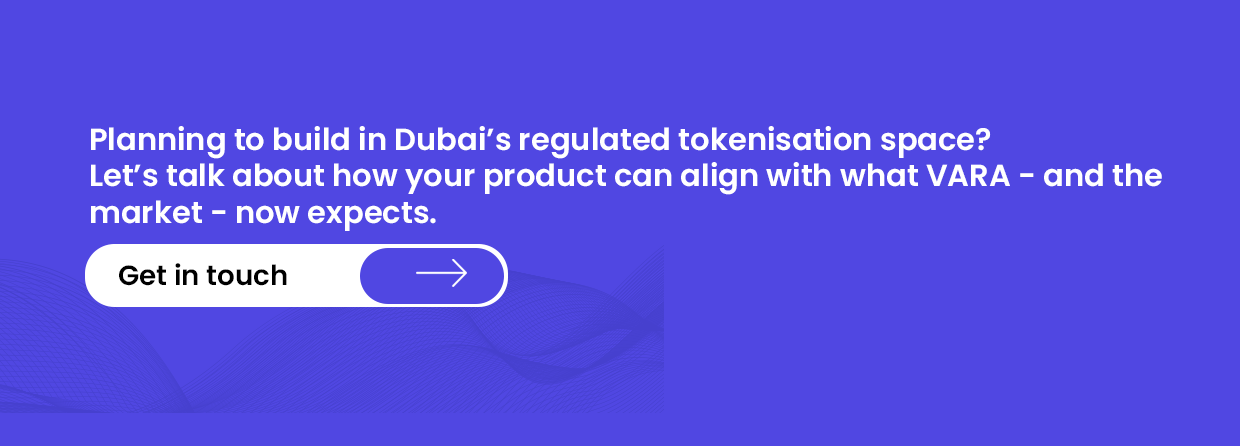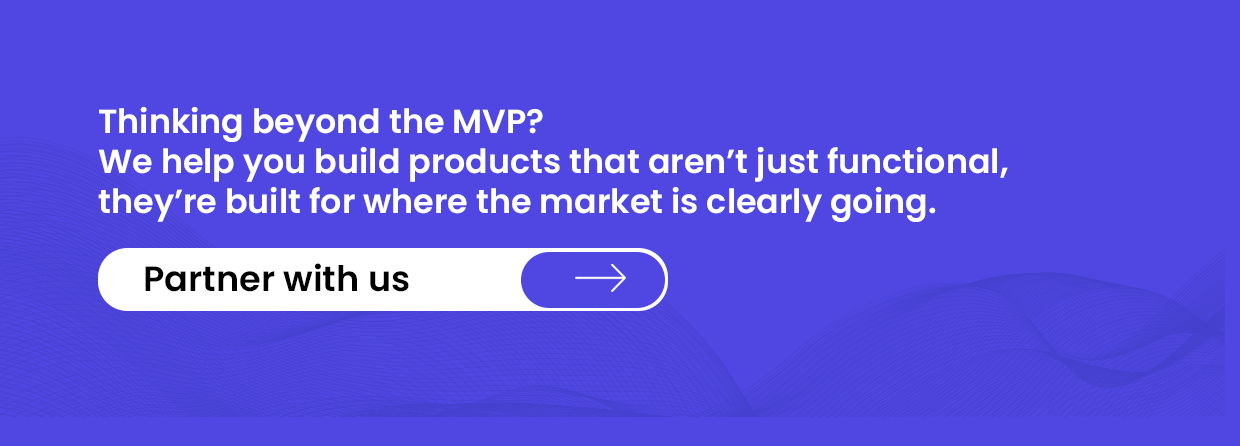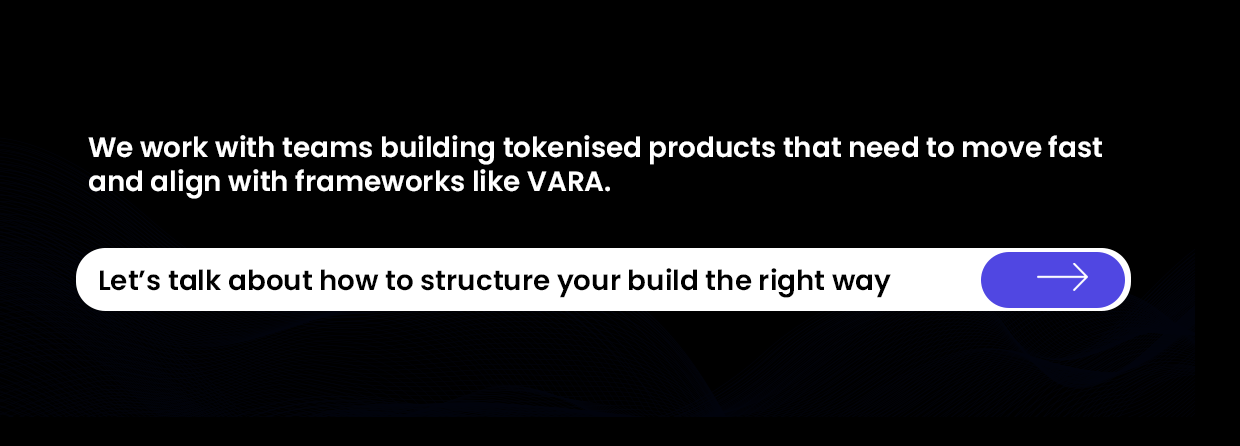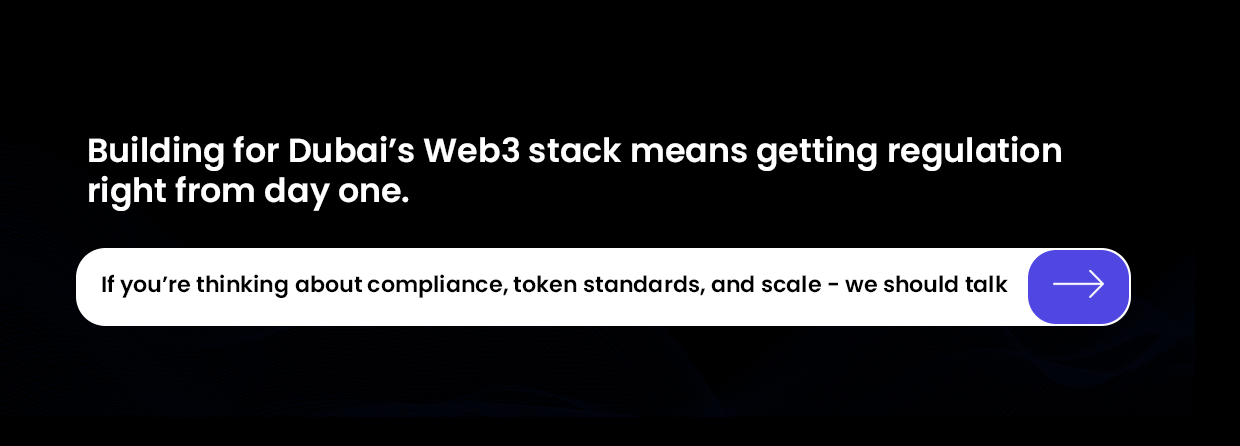
For a while, tokenisation in Dubai felt like a future trend – something everyone was excited about, but no one was truly building at scale.
That’s no longer the case.
With regulated players now entering the scene and securing serious licences, the city’s token economy is shifting from potential to production. Just this week, Ctrl Alt – an infrastructure platform focused on tokenised assets – secured its licence from Dubai’s Virtual Assets Regulatory Authority (VARA) to operate as a Virtual Asset Service Provider (VASP).
This isn’t just a news flash – it’s a clear signal to founders already building in Dubai:
→ The infrastructure layer is maturing
→ Compliance is becoming product-critical
→ And the race is on to build regulated-first platforms that actually scale
In this blog, we’ll break down what this shift means for local builders, what founders should take away from early infra movers like Ctrl Alt, and what to think about when building tokenised products for a city that’s clearly betting big on regulated innovation.
The Local Infrastructure Is Maturing Fast And That Changes How You Build
Dubai isn’t just embracing virtual assets in theory – it’s putting real scaffolding around how they’re built, licensed, and launched. With the Virtual Assets Regulatory Authority (VARA) issuing structured frameworks for everything from custody and exchange to tokenisation infrastructure, the city now offers what most markets still lack: regulatory clarity.
And that changes everything for founders.
You’re no longer building in the dark or waiting for some future compliance retrofit. You’re building inside a defined, auditable structure – which means products can go live with confidence, partnerships can form earlier, and real-world use cases can finally take centre stage.
But it also means the bar is higher now.
Institutional players, ecosystem partners, and even investors are starting to expect more than just slick MVPs and token whitepapers. They’re looking for:
- Infrastructure that can plug into licensed environments
- Token standards that match regulatory norms (think ERC-1400, not just ERC-20)
- UI/UX that considers KYC, custody status, and user-level asset visibility from day one
In short: the maturity of the local infrastructure isn’t just a market signal – it’s a product brief. And the most relevant builders are already adjusting their roadmap accordingly.
Ctrl Alt’s VARA Licence – A Marker for What’s Gaining Traction in Dubai
When a tokenisation infrastructure company secures a VARA licence, it’s not just a win for that team – it’s a pulse check on where the ecosystem is heading.
Ctrl Alt’s approval to operate as a Virtual Asset Service Provider (VASP) is one of those moments. It signals that Dubai’s regulatory framework isn’t just functional – it’s attracting and enabling serious infrastructure plays. This isn’t pre-seed experimentation anymore. It’s fundable, scalable, and built for integration.
For founders, there are a few things worth noting here:
- There’s still room in the stack. Ctrl Alt focuses on tokenisation rails, but the surrounding layers – compliance tools, secondary markets, user wallets, API-driven orchestration – are wide open for innovation.
- Regulated infra is attracting capital. A VASP licence is more than a regulatory checkbox; it’s a credibility badge that opens doors to institutional interest.
- Compliance is no longer optional. Whether you’re building B2B or B2C, your future partners and clients are already starting to filter solutions through a VARA-aligned lens.
The takeaway? Moves like Ctrl Alt’s aren’t just worth applauding – they’re worth interpreting. Because every licence granted in this space sets the tone for what’s next.
What Dubai-Based Founders Should Take Away from This?
The message is clear: tokenisation infrastructure is no longer an experimental space – it’s an investable, regulated, fast-evolving ecosystem. And that means the expectations for what you build, and how you build it, are shifting.
If you’re building in tokenisation, DeFi, or real-world assets (RWAs), a few things should be front of mind:
- Compliance is becoming product-native. Your tech stack isn’t separate from your regulatory posture anymore. Licensing paths, data structures, KYC logic – they’re all part of the build.
- Licensing conversations should start early. Waiting until post-funding or late-stage validation to think about regulation can slow everything down – product timelines, integrations, investor confidence.
- Product decisions must align with frameworks like VARA. Whether it’s how custody is displayed in the UI or how asset issuance is structured on-chain, these aren’t just design choices – they’re compliance signals.
Building in this space now means navigating regulation and product development at the same time – and founders who approach both in parallel will move faster, scale smarter, and get taken seriously earlier.
That’s exactly where the right dev partner comes in – not just to ship code, but to help you build with compliance in mind from day zero.
Building the Right Product for Dubai’s Regulated Web3 Stack
In a market like Dubai – where regulation is clear, enforceable, and designed to support innovation – compliance isn’t a constraint. It’s part of your product architecture.
Whether you’re building a tokenised marketplace, a wallet, a custody layer, or an on-chain asset registry, your stack needs to go beyond functionality. It needs to be audit-friendly, partner-ready, and aligned with what frameworks like VARA will look for – either now, or when you scale.
Here’s how that translates into the build itself:
API Support for Compliance Checks
Your product should make it easy to connect with tools that surface user risk profiles, wallet history, and KYC status in real time. That means building flexible API layers that can ingest:
- Onboarding validations (KYC/KYB)
- Wallet scoring and blacklist screening
- Transaction monitoring integrations
This isn’t just for internal use – it’s what institutional partners or custodians will expect before touching your rails.
Support for Scalable, Regulated Token Standards
If your product involves issuing, managing, or transferring assets, ERC-20 won’t cut it. You’ll want to work with standards like ERC-1400 or ERC-3643, which support:
- Permissioned transfers
- On-chain and off-chain compliance logic
- Document-linked assets for real-world backing
These standards aren’t hypothetical – they’re being adopted by the very platforms securing VARA licences today.
Product UX That Matches Regulatory Expectations
Regulated environments demand clarity – not just in code, but in how users interact with the product. That means:
- Asset custody must be clearly visible at the user level
- Access to features may need to be permission-based (linked to compliance status)
- There should be internal audit trails for key actions – minting, transfers, settlements
If you’re thinking of this as an afterthought or post-launch feature – don’t. These are product foundations, not extras.
Ultimately, if your product can’t play well with regulators, partners, or larger rails – it won’t scale. And in Dubai, the tech that scales is the tech that’s aligned from the start.
A Regulated Ecosystem Needs Regulated-Ready Products
Dubai isn’t speculating on the future of virtual assets – it’s actively shaping it. With frameworks like VARA in place and players like Ctrl Alt stepping into the spotlight, the direction is clear: tokenisation is going mainstream, but only for those who build with trust, clarity, and compliance at the core.
For founders, this is both a challenge and a massive opportunity. The infrastructure is here. The bar has been set. Now it’s about building products that can meet it – products that are not just technically sound, but regulation-ready from day one.
That’s where the real advantage lies: building in a way that doesn’t just pass checks later, but moves faster, earns confidence sooner, and scales without rewrites.
If that’s the vision you’re aiming for, you need the right build partner – one that understands both product and regulation, and knows how to turn complex frameworks into clean, usable, scalable software.




